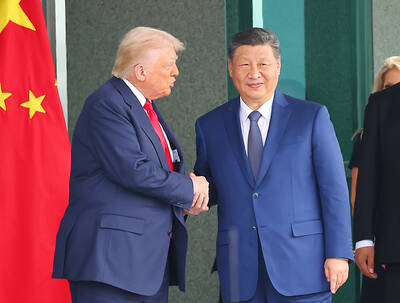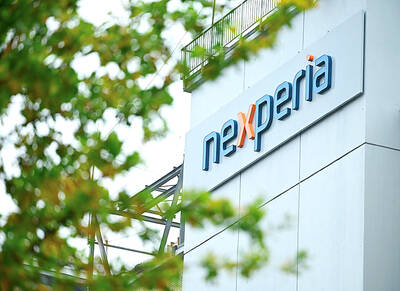Taiwan Land Development Corp (TLDC, 台灣土地開發) is seeking to transform its business model by expanding into the creative industry, as land development is likely to see another tough year, chairman Chiu Fu-sheng (邱復生) said yesterday.
“It is time to adopt a new business strategy to meet the needs of an ever-changing society,” said Chiu, whose company in June last year teamed up with Canada-based Cameron Thomson Group to build a studio park in Hualien County, with a view to making it a local version of Hollywood.
It secured a partnership with WPC Media Services five months later to set up a digital data bank to serve media and entertainment companies at more competitive costs.
Digitalization and innovation can work hand in hand with real-estate development in the pursuit of better living quality, Chiu said.
Toward the end, TLDC, which used to focus on the development of government-owned industrial parks, plan to introduce creative, digital and leisure elements to four existing development projects in Hsinchu, Hualien and Kinmen, he said.
Last week, TLDC celebrated the presence of sports brands Nike, New Balance, PUMA and Converse at Kinmen’s Wind Lion Plaza (風獅城), a build-operate-transfer project with the county government, Chiu said.
The move is TLDC’s latest bid to turn the plaza into a shopping haven for tourists from Taiwan, China and elsewhere using the “three small links” transport route, he said.
Retailers from China have voiced interest in setting up outlets in the plaza, attracted by its relatively low rent and duty-free business potential, Chiu said.
In addition, TLDC plans to boost the appeal of its Hsinpu Smart Park in Hsinchu by launching a peacock garden over the Lunar New Year holiday, he said.
The company owns a large plot of land in Hsinpu where the developer plans to build boutique hotels, service apartments and Hakka-style villas, flanked with a farm and tea garden on either side to provide the feeling of peace and harmony with the environment.
TLDC will also continue to develop Hualien Creative Park and a residential complex the Huilanwan Sunrise Village, Chiu said.
The former project includes a movie theater, a hotel, a cultural museum, a conference center and other facilities, while the latter offers “green,” “smart” apartments equipped with the latest technology devices and services.
“All TLDC projects mean to answer people’s longing to retire free and happy,” Chiu said.

Nissan Motor Co has agreed to sell its global headquarters in Yokohama for ¥97 billion (US$630 million) to a group sponsored by Taiwanese autoparts maker Minth Group (敏實集團), as the struggling automaker seeks to shore up its financial position. The acquisition is led by a special purchase company managed by KJR Management Ltd, a Japanese real-estate unit of private equity giant KKR & Co, people familiar with the matter said. KJR said it would act as asset manager together with Mizuho Real Estate Management Co. Nissan is undergoing a broad cost-cutting campaign by eliminating jobs and shuttering plants as it grapples

TEMPORARY TRUCE: China has made concessions to ease rare earth trade controls, among others, while Washington holds fire on a 100% tariff on all Chinese goods China is effectively suspending implementation of additional export controls on rare earth metals and terminating investigations targeting US companies in the semiconductor supply chain, the White House announced. The White House on Saturday issued a fact sheet outlining some details of the trade pact agreed to earlier in the week by US President Donald Trump and Chinese President Xi Jinping (習近平) that aimed to ease tensions between the world’s two largest economies. Under the deal, China is to issue general licenses valid for exports of rare earths, gallium, germanium, antimony and graphite “for the benefit of US end users and their suppliers

Dutch chipmaker Nexperia BV’s China unit yesterday said that it had established sufficient inventories of finished goods and works-in-progress, and that its supply chain remained secure and stable after its parent halted wafer supplies. The Dutch company suspended supplies of wafers to its Chinese assembly plant a week ago, calling it “a direct consequence of the local management’s recent failure to comply with the agreed contractual payment terms,” Reuters reported on Friday last week. Its China unit called Nexperia’s suspension “unilateral” and “extremely irresponsible,” adding that the Dutch parent’s claim about contractual payment was “misleading and highly deceptive,” according to a statement

The Chinese government has issued guidance requiring new data center projects that have received any state funds to only use domestically made artificial intelligence (AI) chips, two sources familiar with the matter told Reuters. In recent weeks, Chinese regulatory authorities have ordered such data centers that are less than 30 percent complete to remove all installed foreign chips, or cancel plans to purchase them, while projects in a more advanced stage would be decided on a case-by-case basis, the sources said. The move could represent one of China’s most aggressive steps yet to eliminate foreign technology from its critical infrastructure amid a